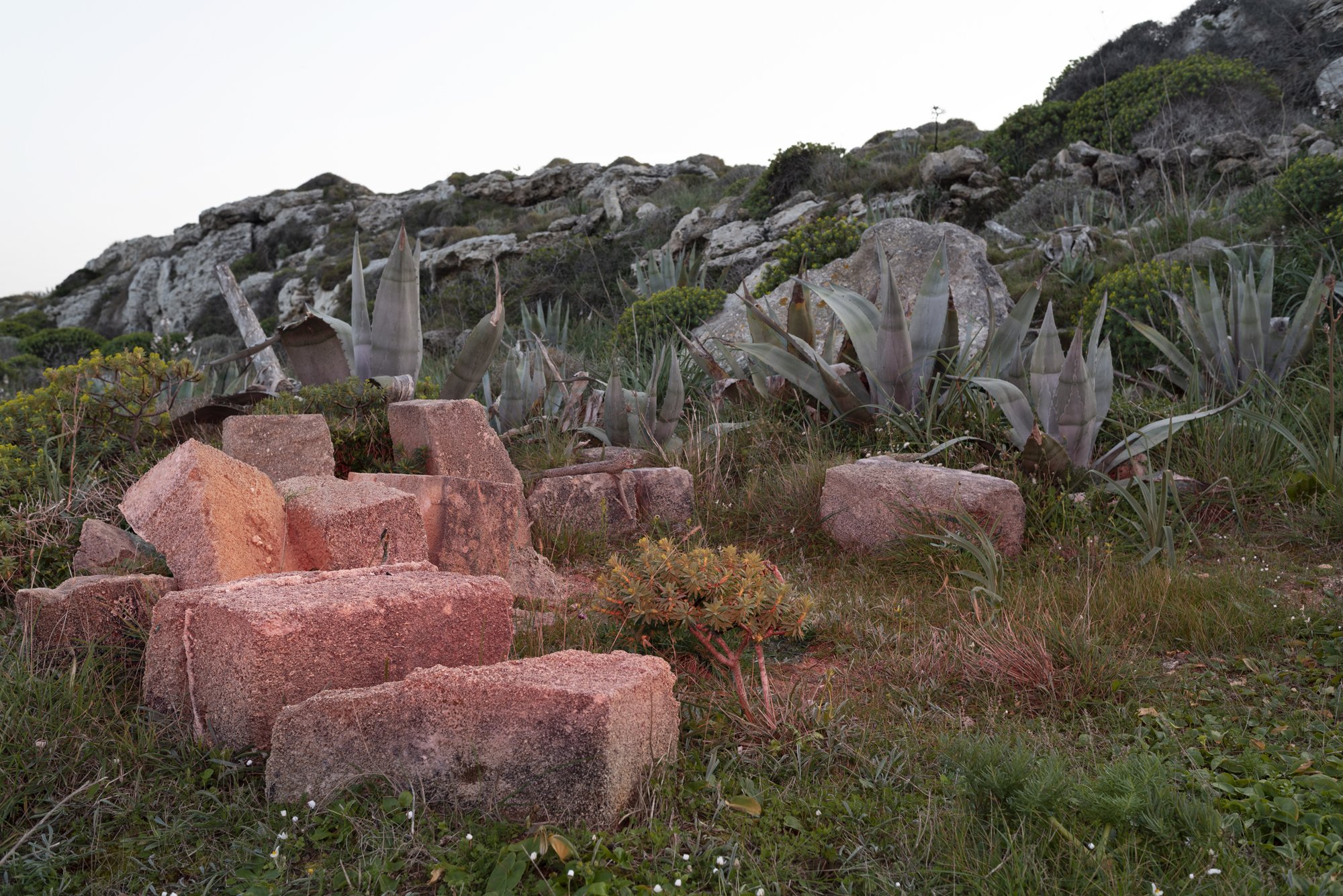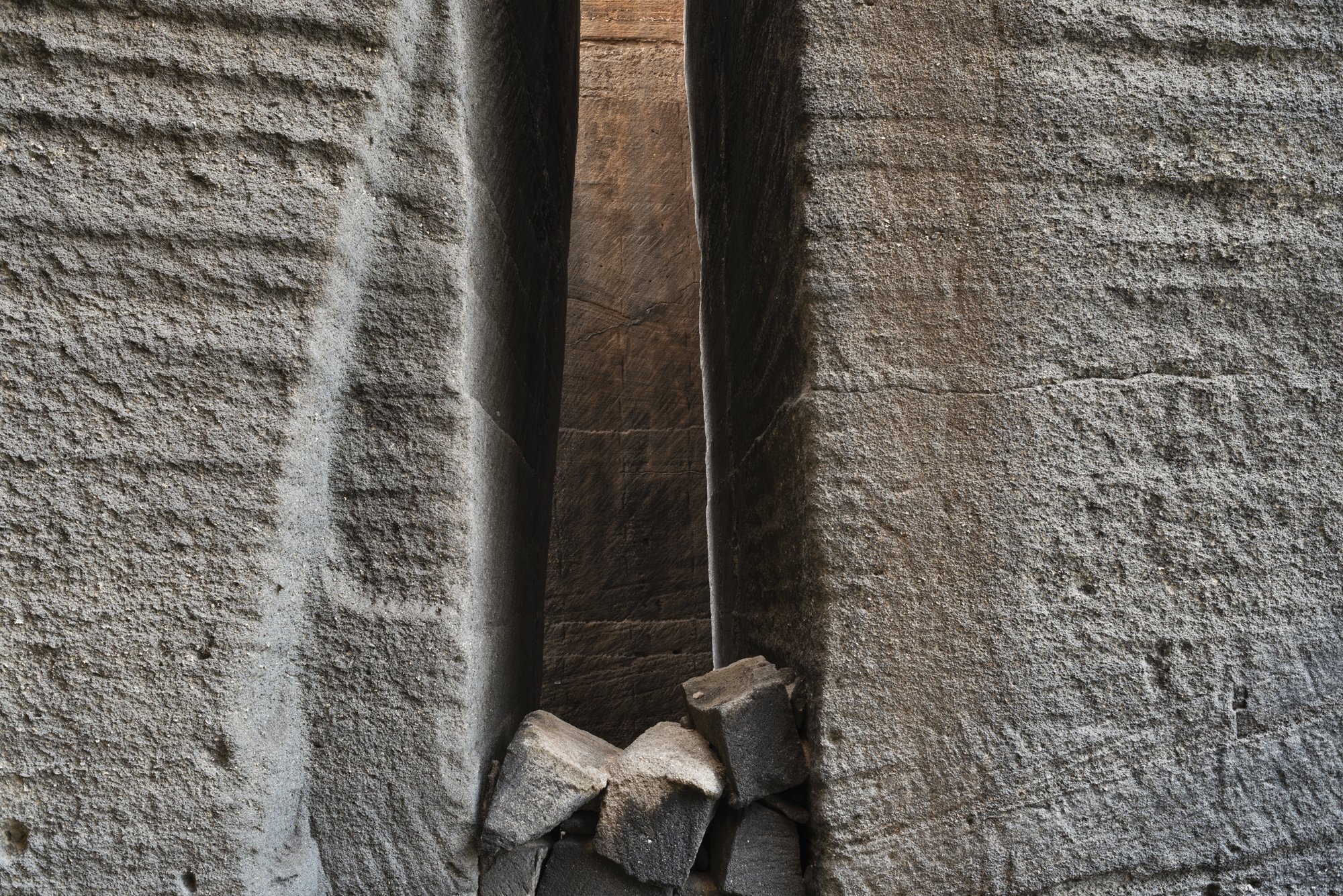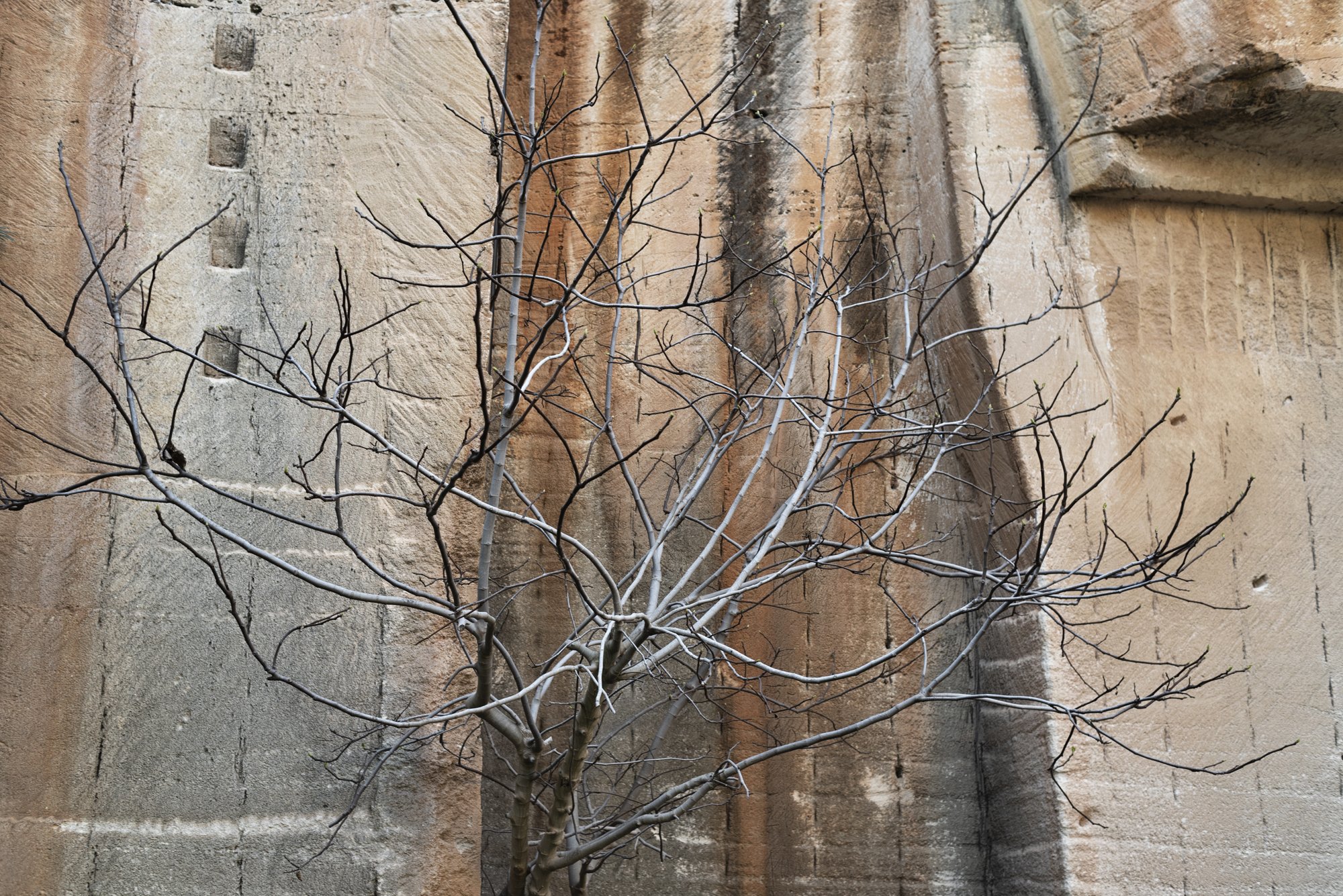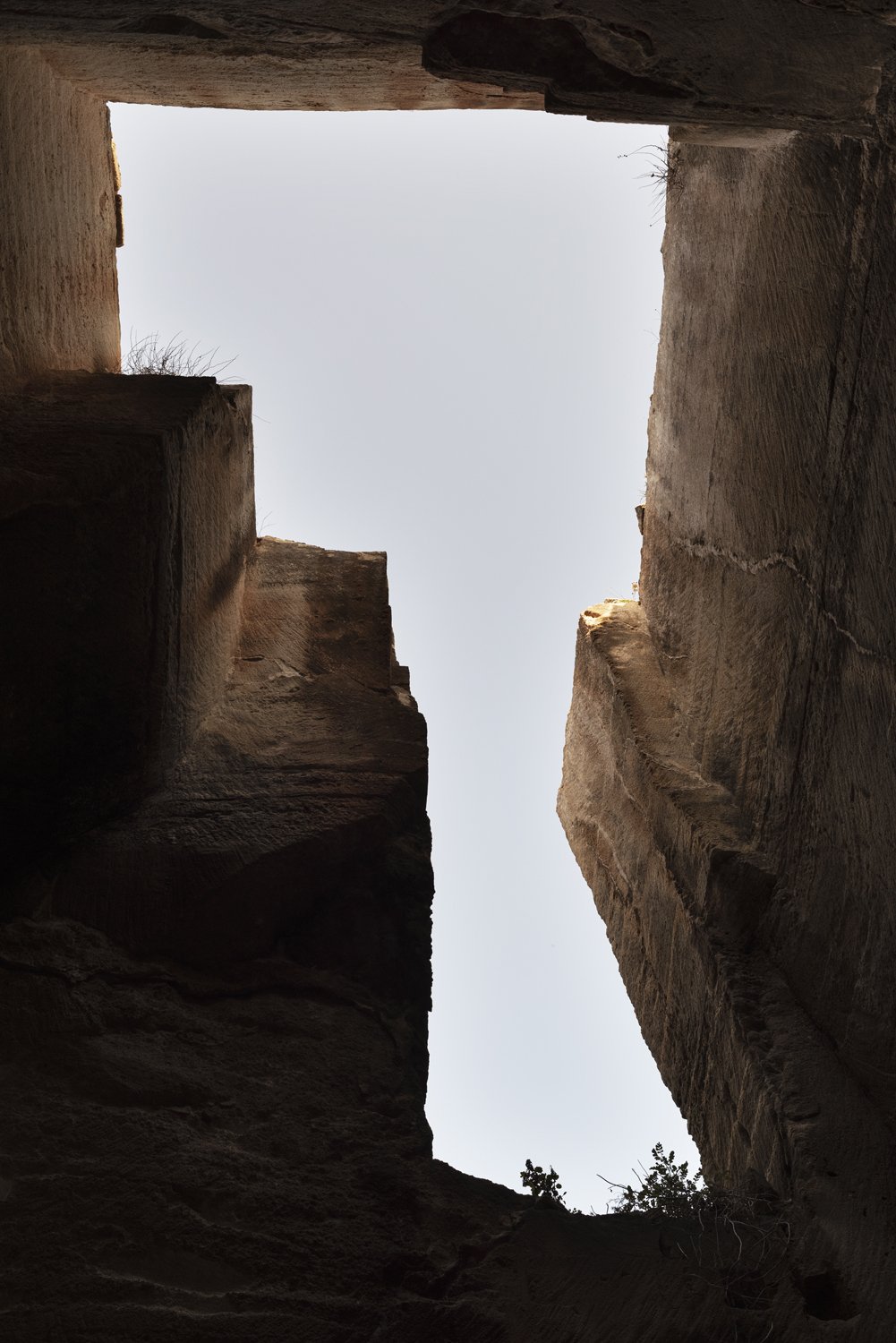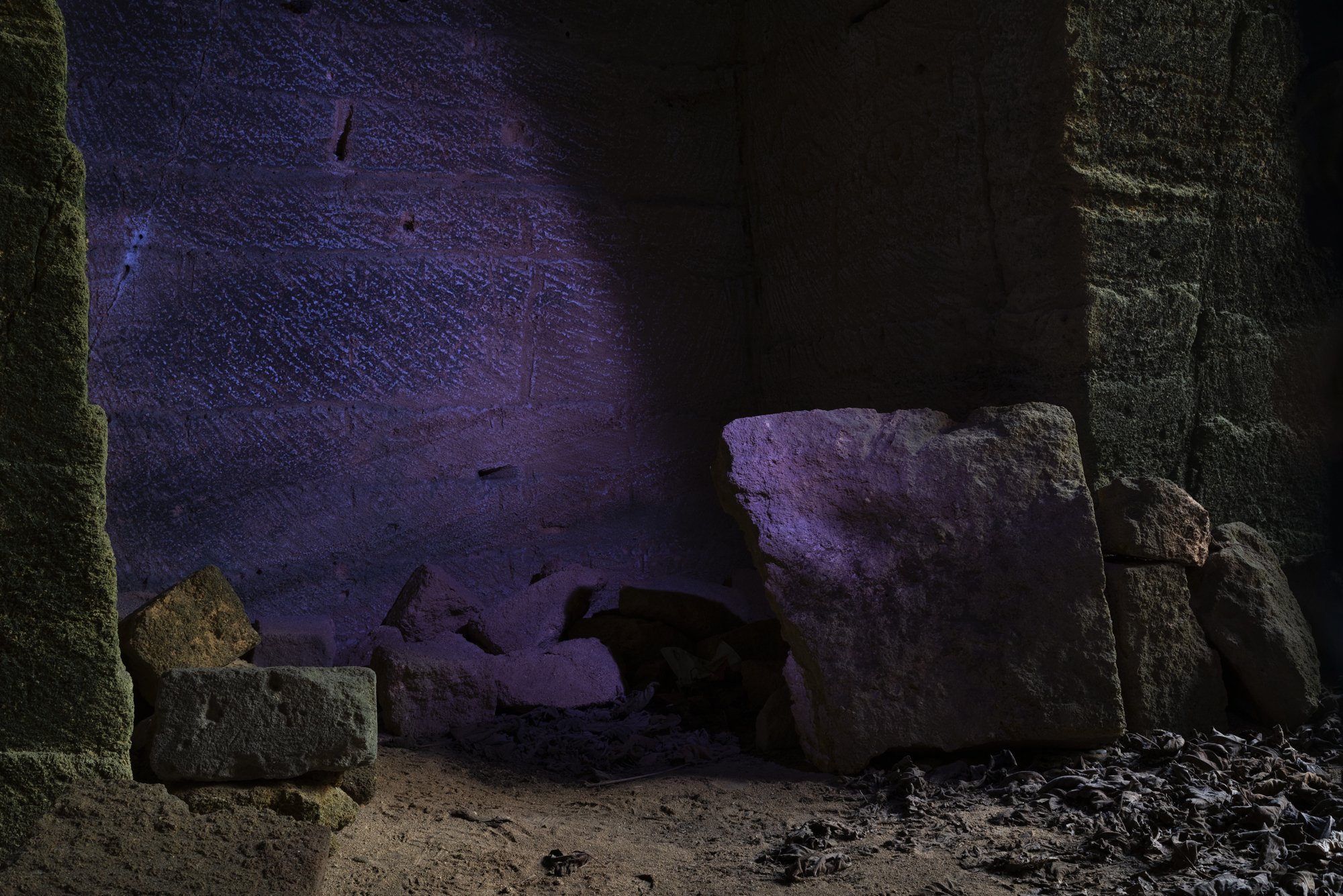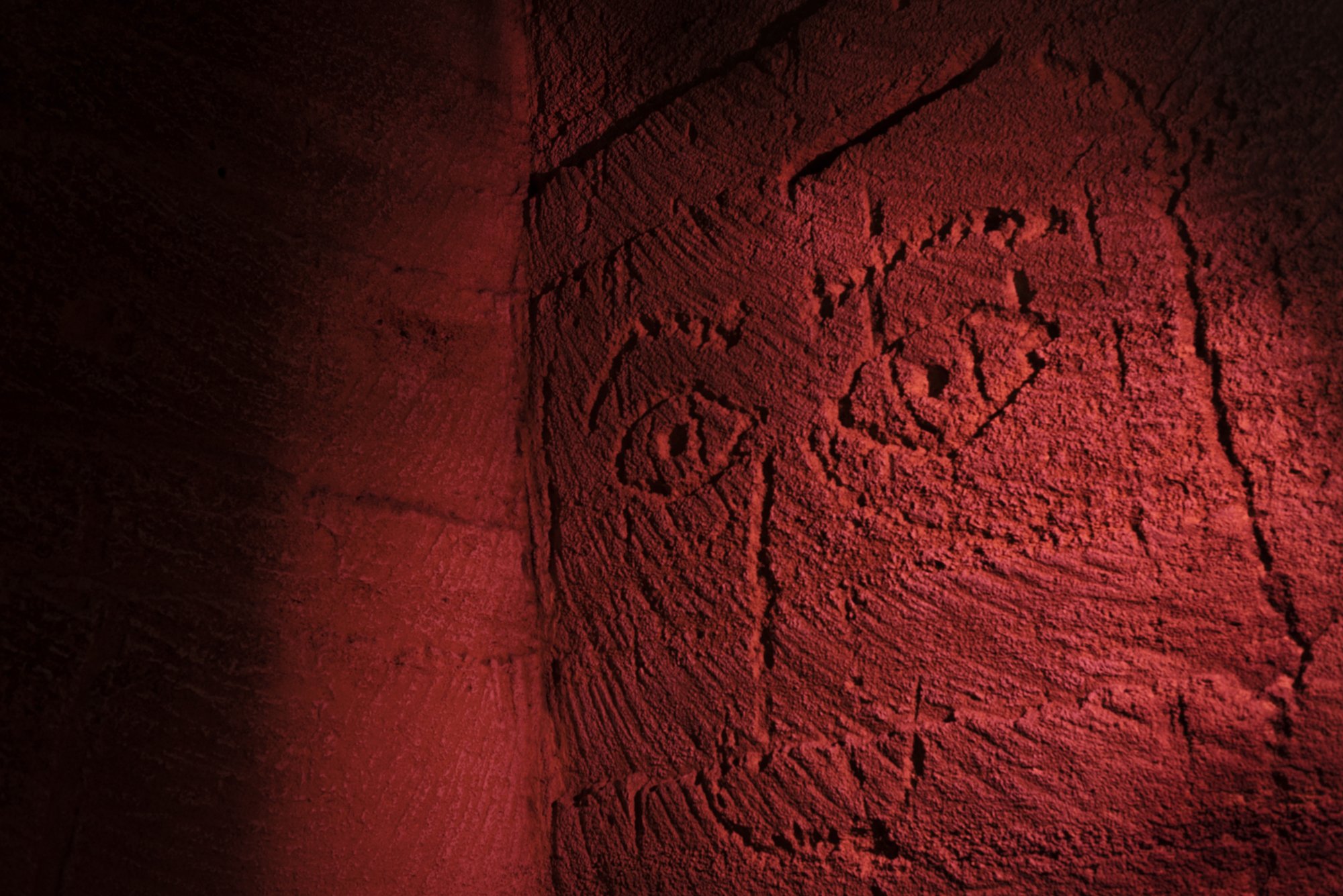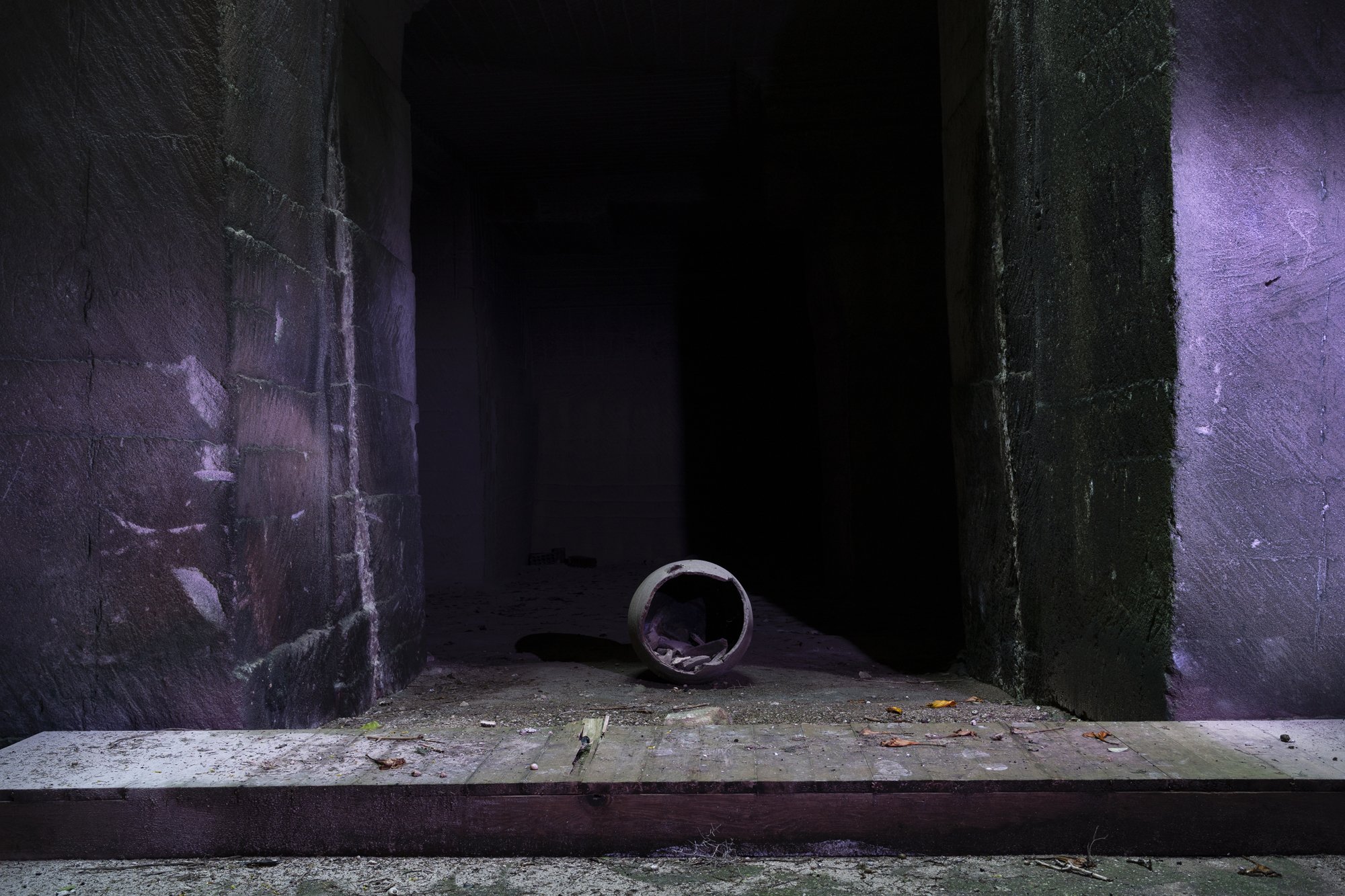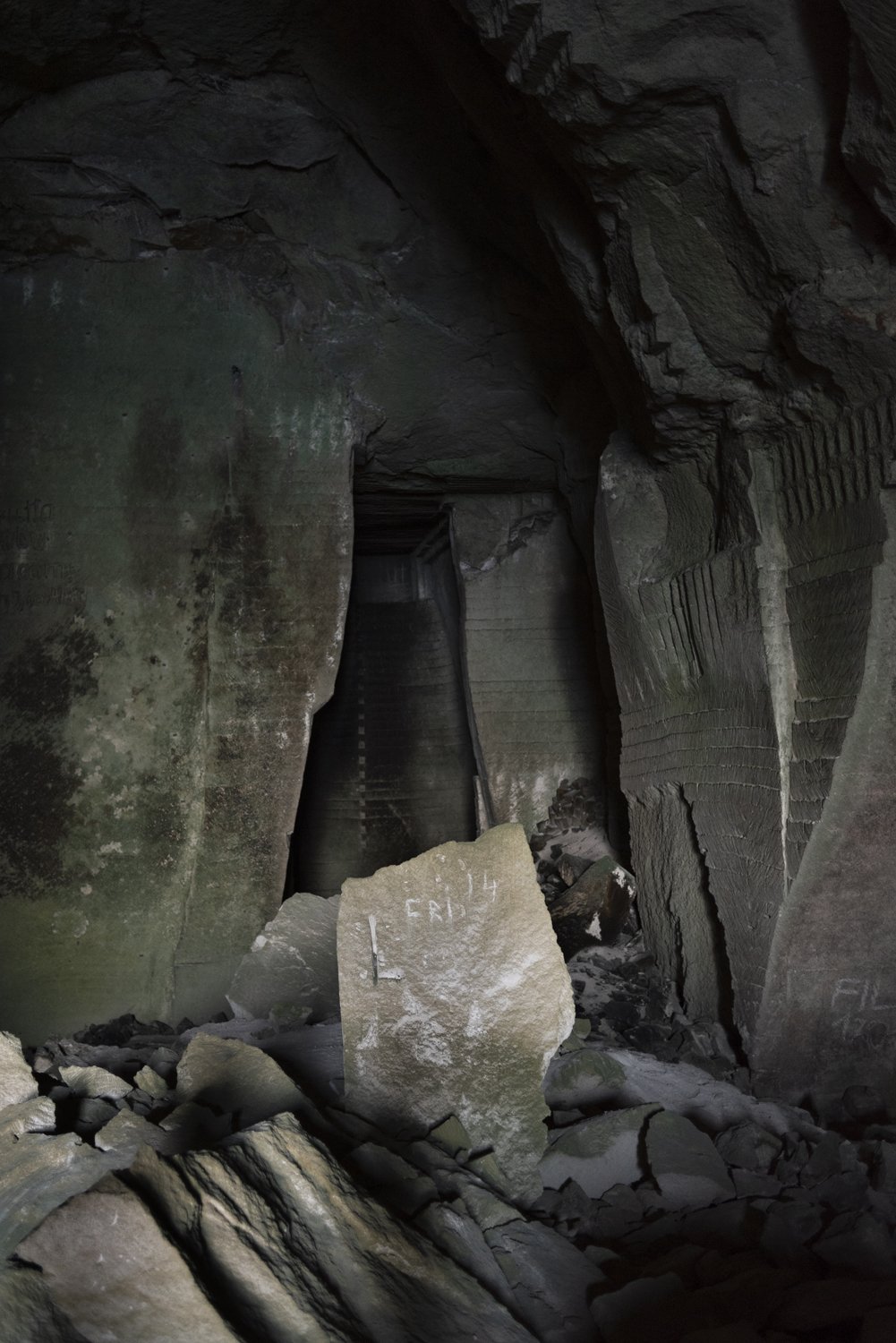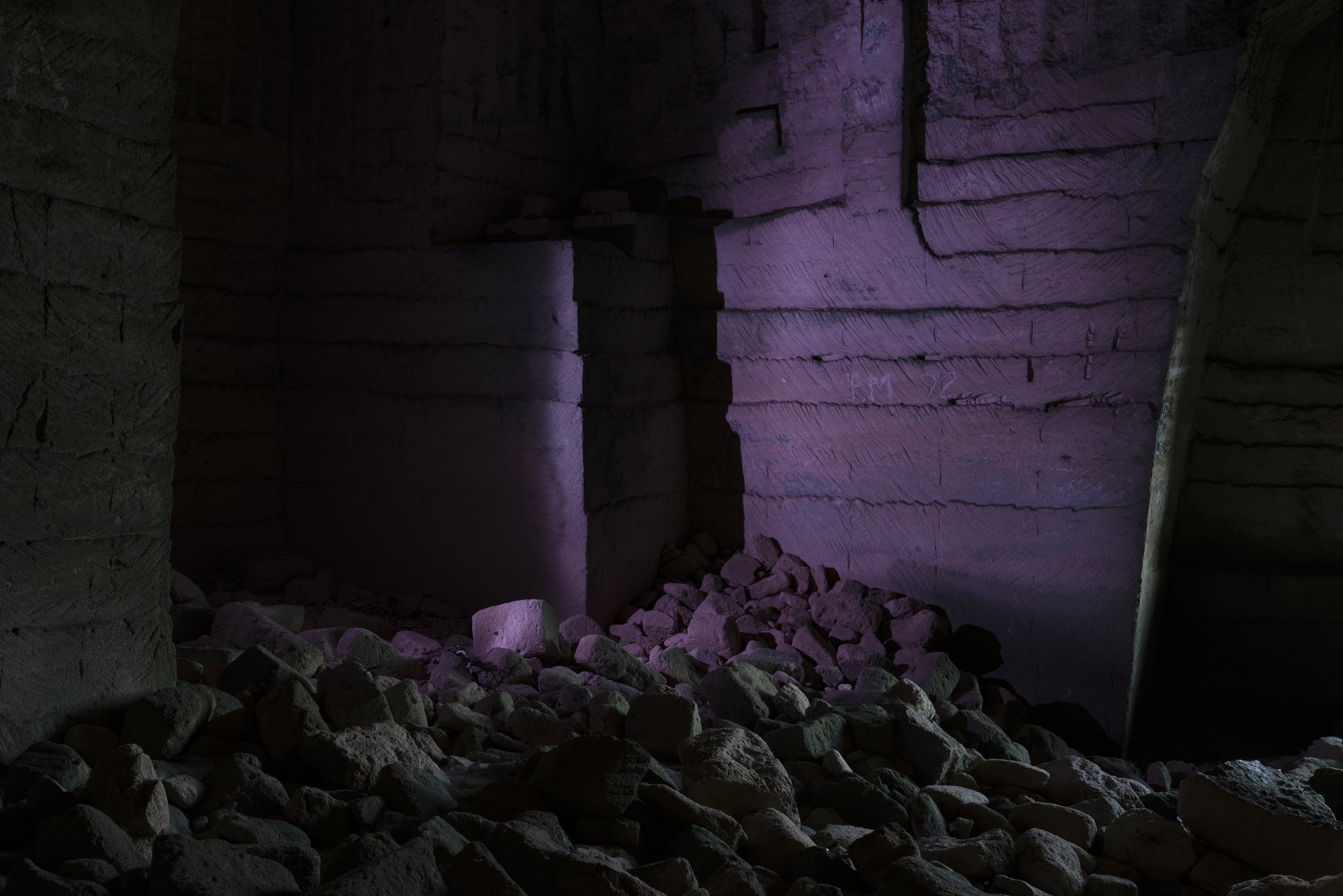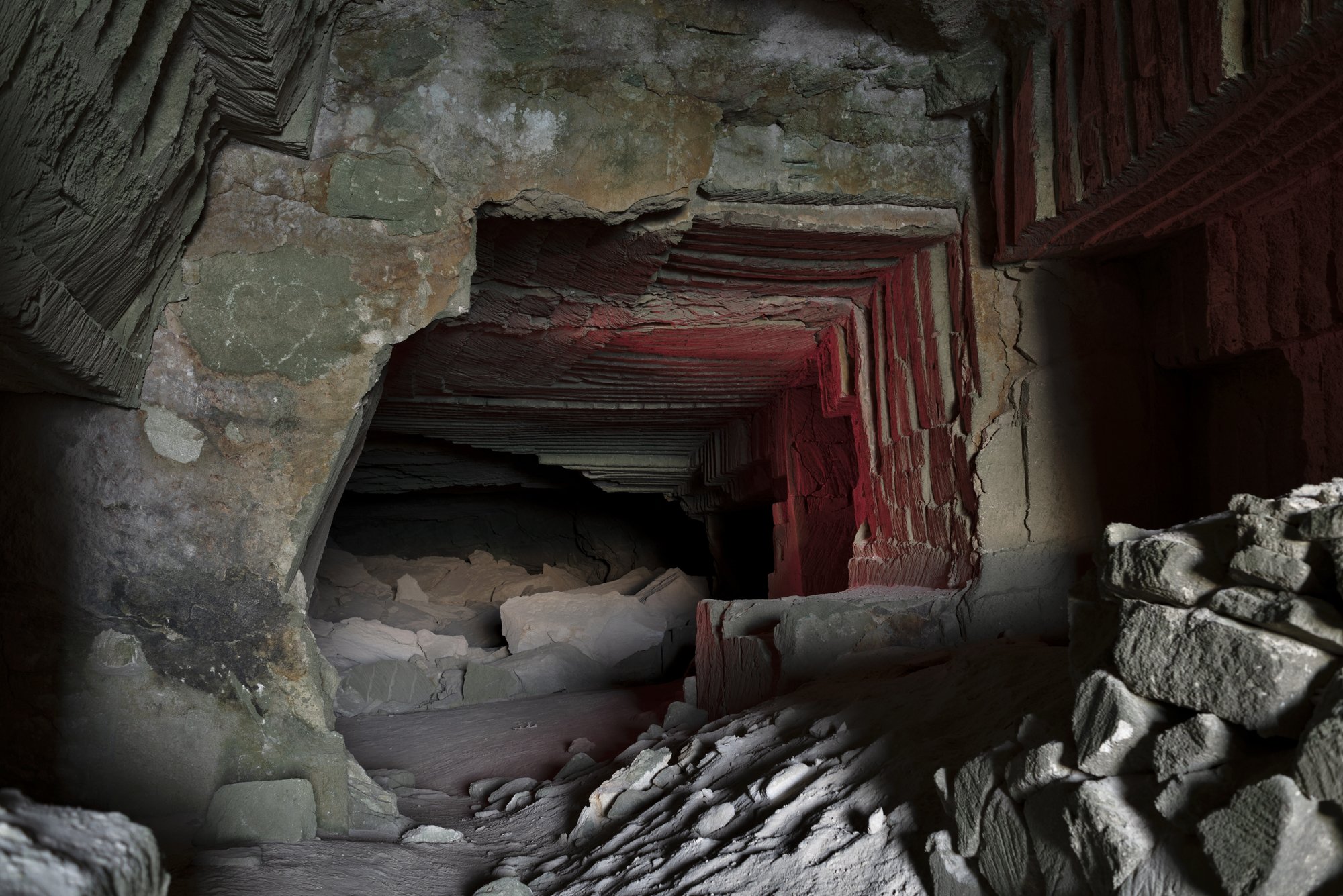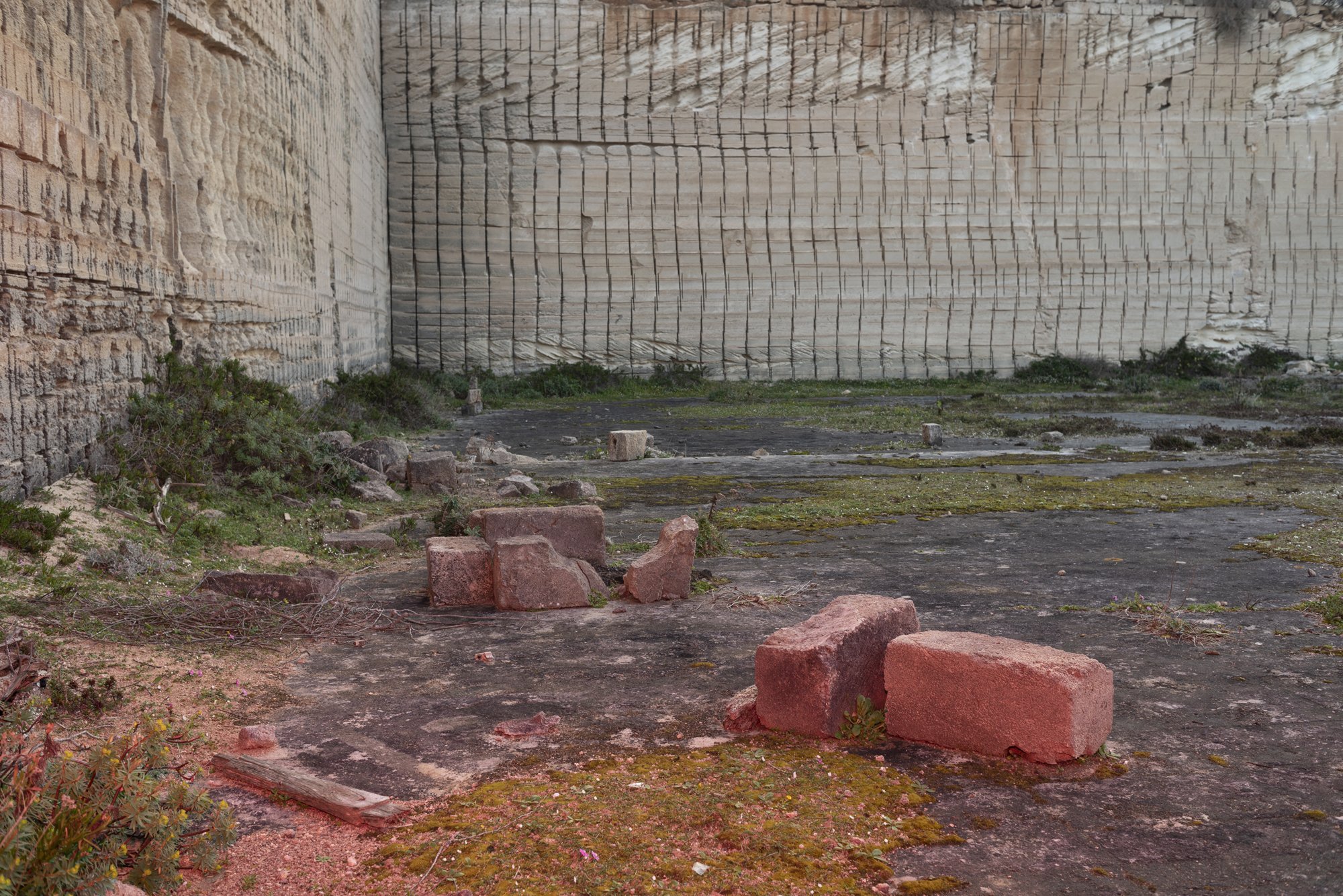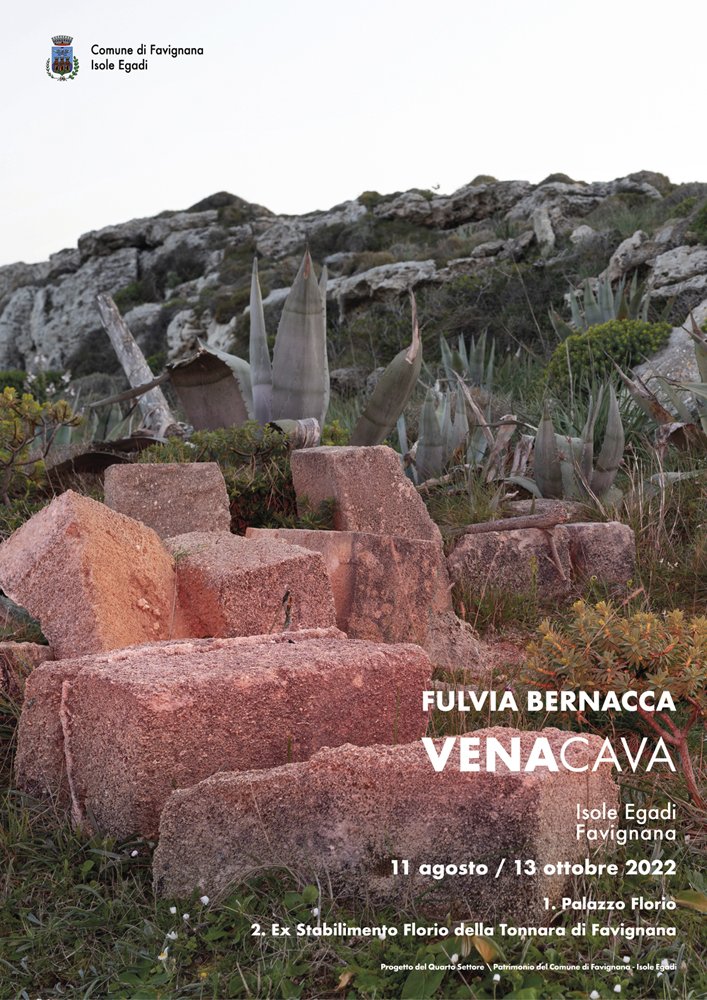VENACAVA
2021
I have been in the island of Favignana so many times in recent years, but I had never entered so deeply into its identity, its history, its body. The uniqueness of this island is due to being completely excavated in half its territory. As a matter of fact for decades one of the most profitable activities was the extraction of a stone similar to tuff, good for construction, a calcarenite, a sedimentary material consisting of marine organisms, fossils and shells, used for most of the buildings on the island and all over Sicily and the Mediterranean. What does remain now of this subtraction, this emptiness, this darkness? I began a journey into this parallel, hidden and underground island, an excavated, upside down and surreal world, towards the heart of Favignana. In the underground I tried to imagine the people who worked in the quarries all their lives, without ever seeing the sunlight, living and working in very difficult conditions. They must have been very strong men, physically and emotionally. I felt their energy, sweat, blood, toil and their intimate and violent connection with the Earth. The blocks of stone that were extracted were called “cantuna”, the singing stone, because when they were beaten they created sound vibrations, from which the “pirriatura” understood the quality of the stone. If they were not good they were cantuna out of tune. So it was the earth itself, this living stone, that guided man, unaware, in the creation of these architectures of extreme beauty and intensity, similar to temples and cathedrals. I felt the connection between these energies, the intimate and visceral relationship between stone and man, between nature and architecture and I saw the art and the sacred generated by this encounter. In this surreal journey, I discovered the heart of Favignana, its most intimate history, I went deep inside, I walked in its veins, I felt its organs pulsating, I felt its energy joined to that of the men who hurt it in some way. I was amazed by how much beauty can be generated by a cut, by emptiness, and how much energy can emerge from subtraction, and how much light can rise from darkness. So I asked myself, do the veins, the heart of the Earth, its soul, together with the fatigue and sweat of men, have a color?
Sono stata sull’isola di Favignana tante volte negli ultimi anni, ma mai ero entrata così in profondità, nella sua identità, nella sua storia, nel suo corpo. L’unicità di quest’isola è data dall’essere per metà completamente scavata. Una delle attività più redditizie infatti, è stata per decenni, quella dell’estrazione di una pietra simile al tufo, ottima per costruzioni, una calcarenite conchiglifera, un materiale sedimentario costituito da organismi marini, fossili e conchiglie, con la quale si sono costruiti la maggior parte degli edifici sull’isola e in gran parte della Sicilia e del Mediterraneo. Cosa rimane ora di questa sottrazione, di questo vuoto, di questo buio? Ho iniziato così un viaggio in questo mondo parallelo, nascosto e sotterraneo, un mondo scavato, un mondo al contrario, surreale, verso il cuore dell’isola. Sottoterra ho cercato di immaginare le persone che hanno lavorato per tutta una vita nelle cave, senza mai vedere la luce del sole, vivendo e lavorando in condizioni difficilissime. Dovevano essere uomini molto forti, fisicamente ed emotivamente, ho percepito la loro energia, il sudore, il sangue, la fatica e la loro intima e violenta connessione con la Terra. I blocchi di pietra che si estraevano si chiamavano “cantuna”, la pietra che canta, perché battendoli creavano vibrazioni sonore, dalle quali i “pirriatura” capivano la qualità della pietra e, se non erano buoni, erano cantuna stonati. È stata la terra stessa quindi, questa pietra viva, che ha guidato l’uomo, inconsapevole, nella creazione di queste opere architettoniche di estrema bellezza e intensità, simili a templi e cattedrali. Ho percepito l’unione di queste energie, il rapporto intimo e viscerale tra la pietra e l’uomo, tra natura e architettura e ho visto l’arte e il sacro che da questo incontro si è generato. In questo viaggio surreale, ho scoperto il cuore di Favignana, la sua storia più intima, sono scesa al suo interno, ho camminato nelle sue vene, sentito i suoi organi pulsare, ho sentito la sua energia unita a quella degli uomini che in qualche modo l’hanno ferita. Sono rimasta stupita da quanta bellezza può nascere da un taglio, dal vuoto, da quanta energia può emergere dalla sottrazione, da quanta luce può sorgere dal buio. E mi sono chiesta: le vene, il cuore della Terra, la sua anima, unite alla fatica e al sudore degli uomini, hanno un colore?


